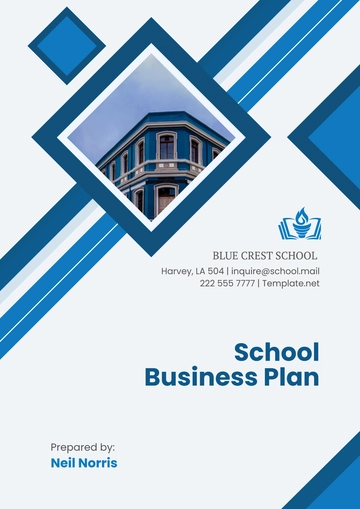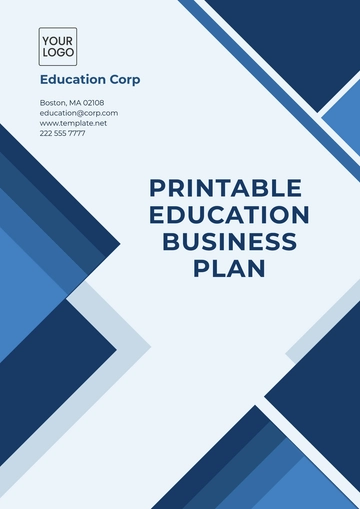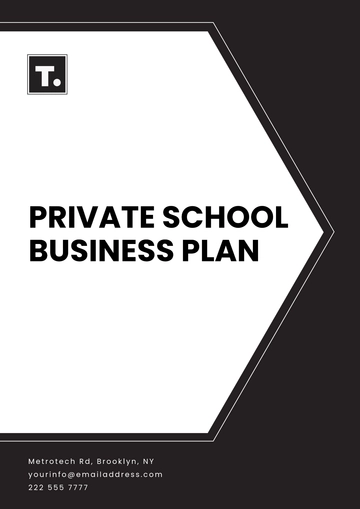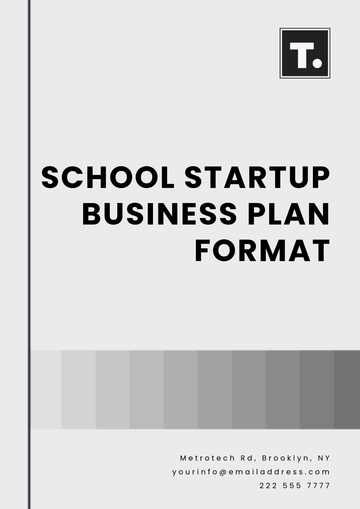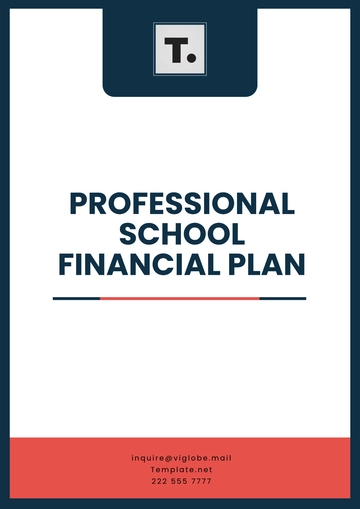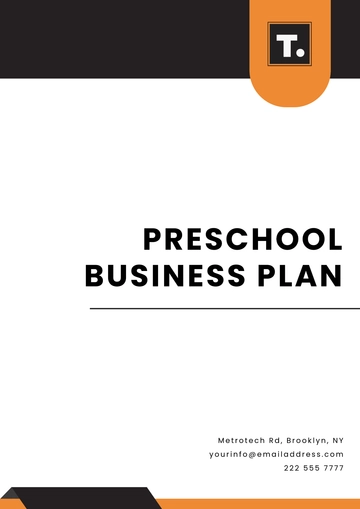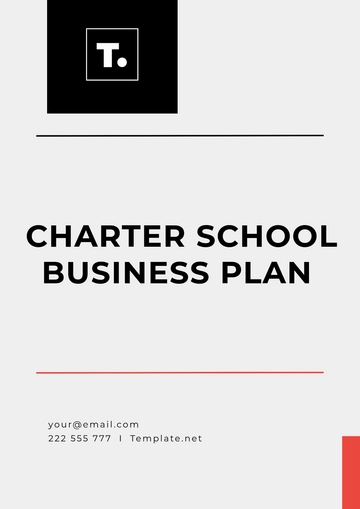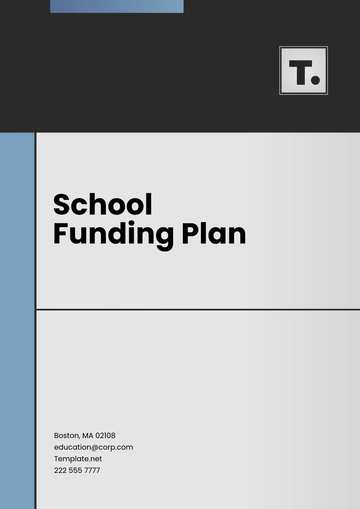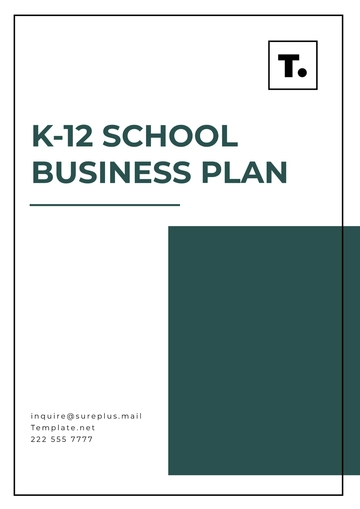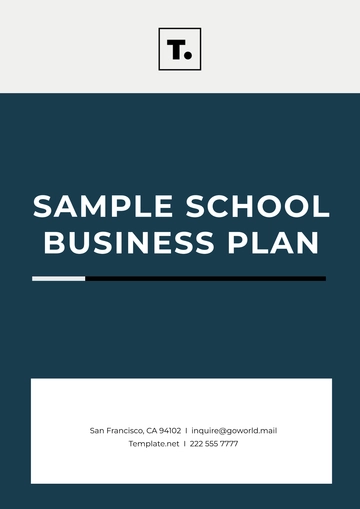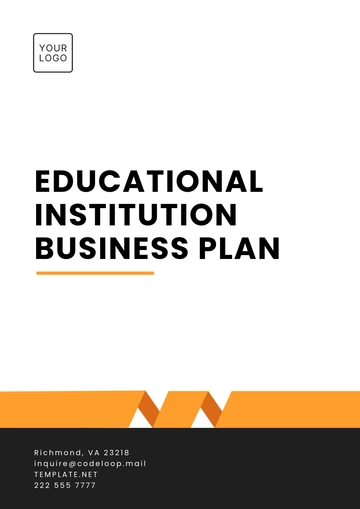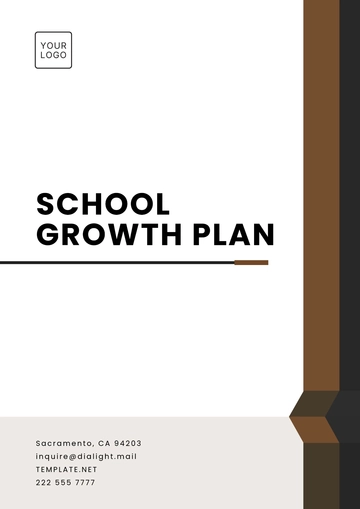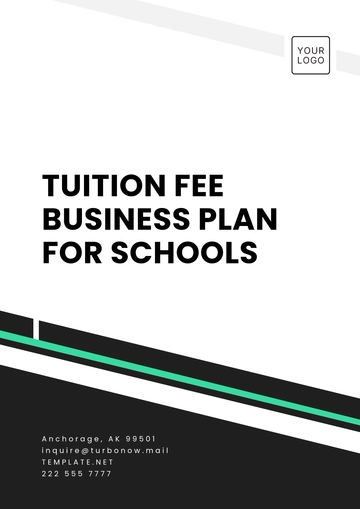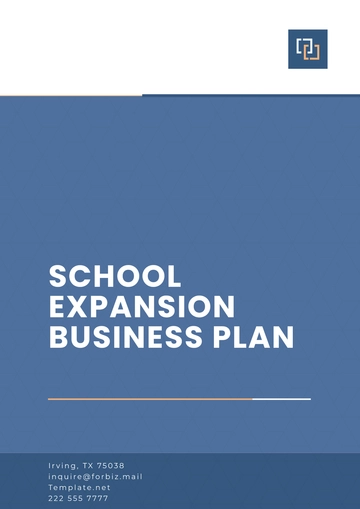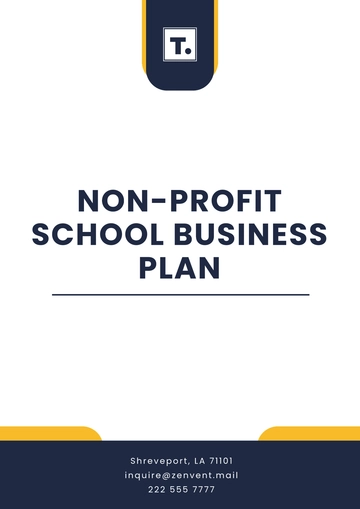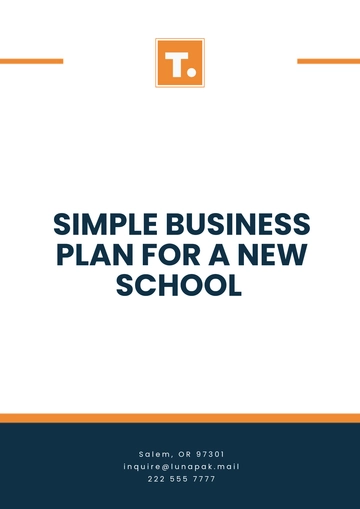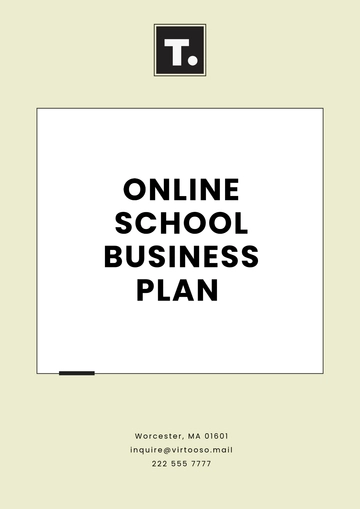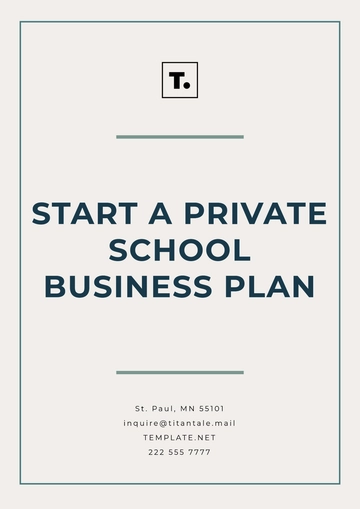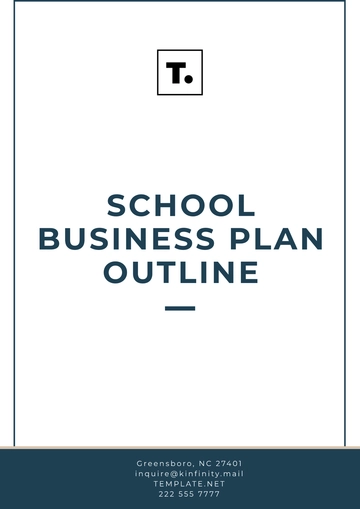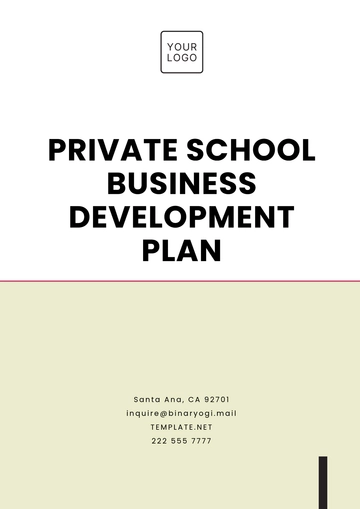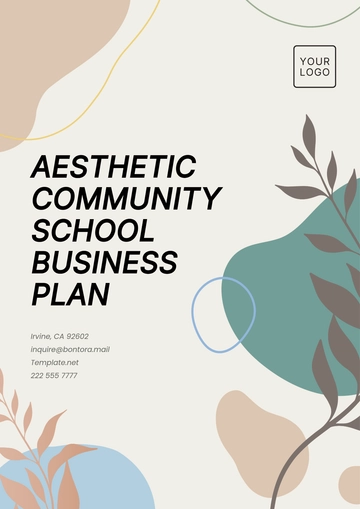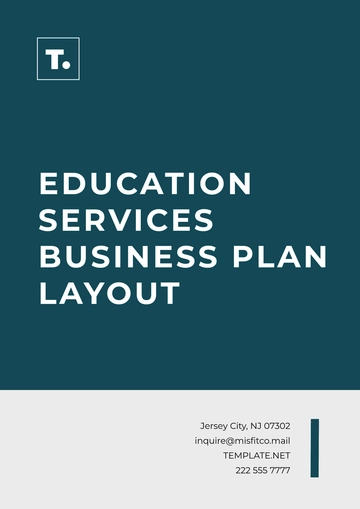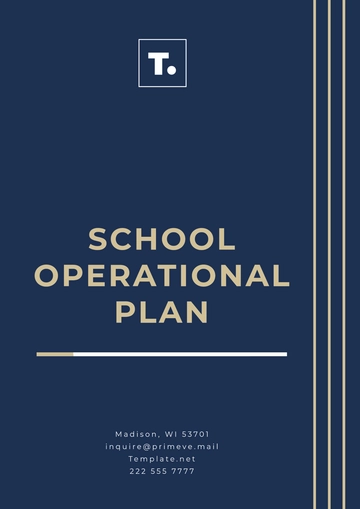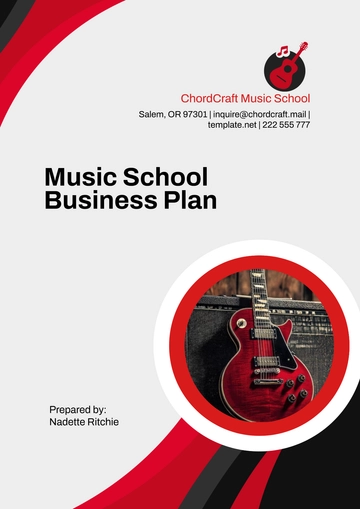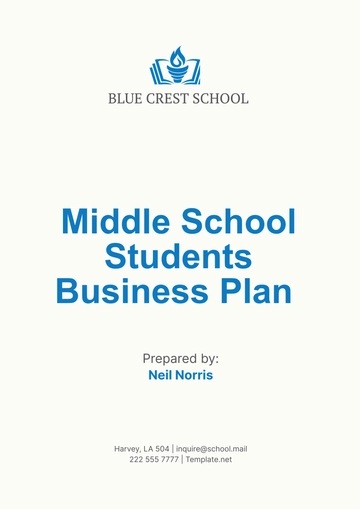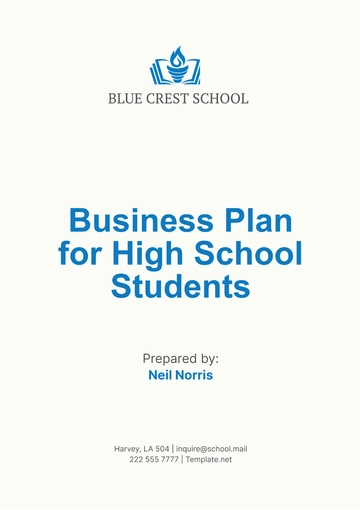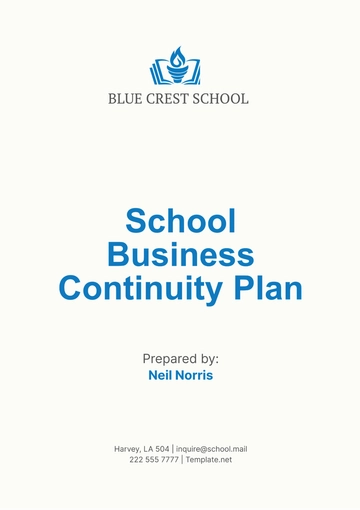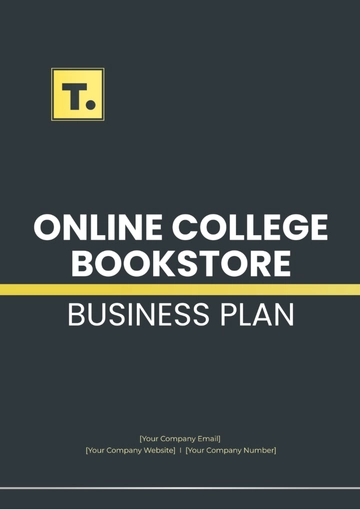Free Tuition Fee Business Plan for Schools
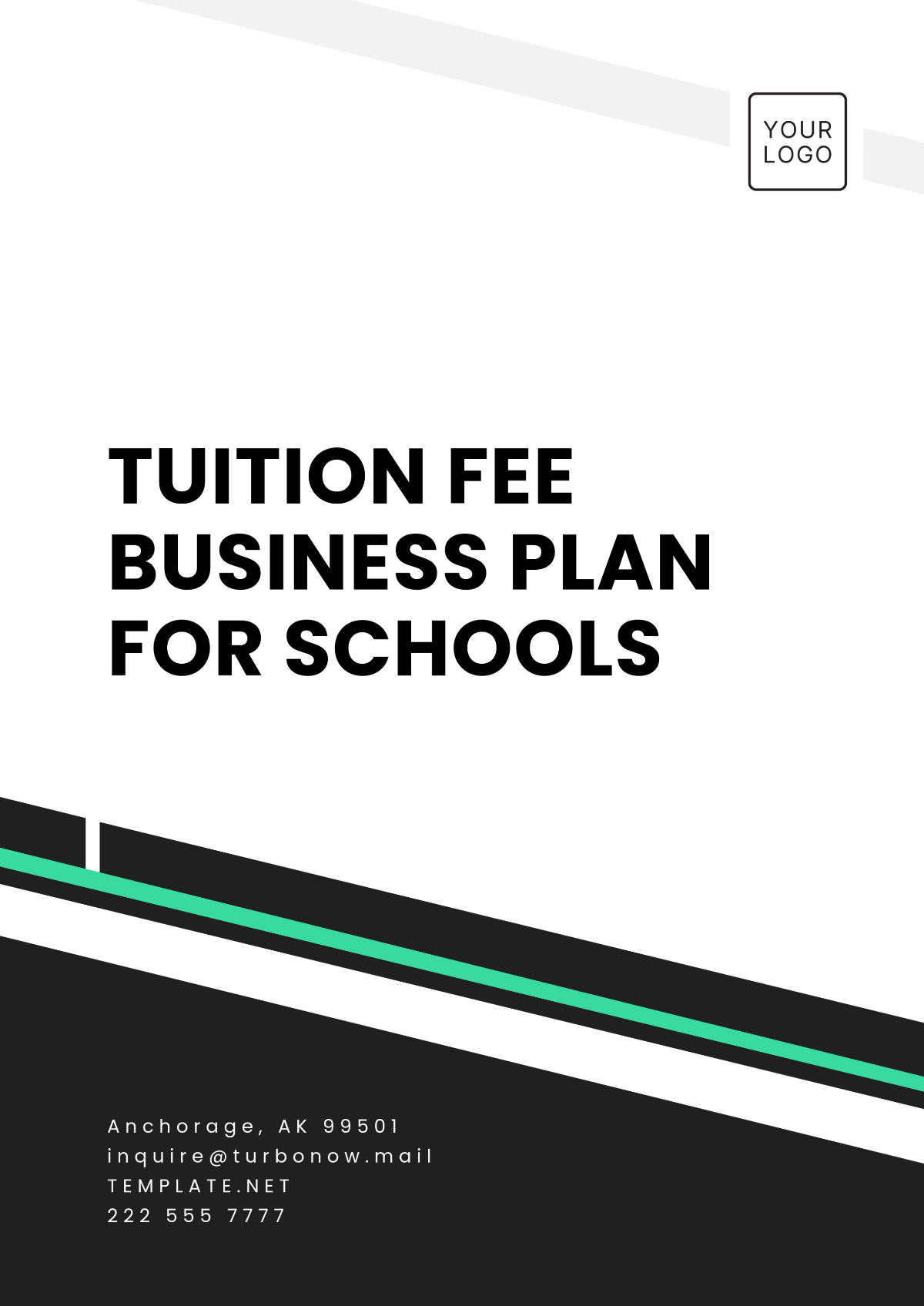
Executive Summary
[Your Company Name] has been a leader in providing innovative education since its founding in 2030. Our mission is to nurture well-rounded, future-ready individuals through advanced learning methodologies and holistic development programs.
To maintain our commitment to excellence and meet growing operational needs, we propose a revised tuition fee structure effective from the academic year 2050-2051. This plan ensures the financial sustainability of [Your Company Name] while enhancing the quality of education, providing more scholarships, and upgrading facilities. With this initiative, we anticipate a 15% revenue growth by 2055 while maintaining accessibility for diverse families.
1. School Overview
Mission Statement: Empowering students to shape a better tomorrow through innovation, integrity, and inclusivity.
Programs Offered: STEAM-based curriculum, immersive virtual reality (VR) learning, environmental studies, and global language programs.
Target Audience: Families seeking high-quality, tech-integrated education for students aged 5-18.
Unique Selling Points:
1:10 teacher-student ratio.
Fully green campus with renewable energy sources.
State-of-the-art AI-driven personalized learning tools.
2. Financial Goals
Short-Term (2050-2053):
Cover operational cost increases due to inflation.
Fund the launch of the “2030 Skills Lab” for coding, robotics, and creative design.
Long-Term (2050-2060):
Build a new dormitory to support boarding students.
Increase scholarship allocation from 10% to 20% of annual revenue.
3. Market Analysis
Competitive Analysis:
Local competitors charge an average annual tuition of $20,000.
FHA’s proposed fees of $22,000 align with the premium services offered.
Demand Analysis:
Growing demand for eco-friendly campuses and tech-centric education in the region.
Enrollment projections suggest a 10% annual increase for the next five years.
Parent Expectations:
80% of surveyed parents are willing to pay higher fees for added value.
95% prioritize technology integration in education.
4. Tuition Fee Structure
Current Fees (2049-2050):
Kindergarten: $15,000/year
Grades 1-8: $18,000/year
Grades 9-12: $20,000/year
Proposed Fees (2050-2051):
Kindergarten: $17,000/year
Grades 1-8: $20,000/year
Grades 9-12: $22,000/year
Scholarships and Financial Aid:
Merit-based scholarships cover up to 50% of tuition.
Income-based financial aid for families earning below $50,000 annually.
5. Revenue and Expense Projections
Projected Revenue:
2049-2050: $8 million
2050-2051: $9.2 million
Major Expenses:
Salaries and Benefits: 60% of annual revenue.
Facility Maintenance: 20%.
Technology and Program Development: 10%.
Scholarships: 10%.
Budget Plan:
Break-even point expected in 2052 after initial infrastructure investments.
6. Communication Plan
Stakeholder Engagement:
Host a parent information session in February 2050.
Publish a detailed tuition fee brochure and FAQs.
Marketing Strategy:
Highlight facility upgrades and new programs funded by the fee increase.
Emphasize the value-added services compared to competitors.
7. Risk Assessment and Mitigation
Risks:
Parent pushback on the fee increase.
Drop in enrollment due to affordability concerns.
Increased competition.
Mitigation Strategies:
Offer flexible payment plans (monthly and bi-annual).
Increase transparency by showcasing financial reports.
Maintain competitive differentiation through consistent quality improvements.
8. Implementation Timeline
January 2050: Proposal approval by the board.
February 2050: Parent consultation and feedback.
March 2050: Finalize tuition structure.
May 2050: Announce changes for the 2050-2051 academic year.
July 2050: Implementation of new fee structure.
9. Evaluation Metrics
Enrollment Growth: Monitor yearly trends (target: 10% increase annually).
Parent Satisfaction: Conduct surveys bi-annually.
Revenue Growth: Evaluate financial sustainability through year-end reports.
Program Improvements: Assess new facilities and technology adoption rates.
Appendices
Parent survey results (January 2050).
Comparative fee analysis (2049).
Draft communication materials for stakeholders.
- 100% Customizable, free editor
- Access 1 Million+ Templates, photo’s & graphics
- Download or share as a template
- Click and replace photos, graphics, text, backgrounds
- Resize, crop, AI write & more
- Access advanced editor
Plan your revenue streams with Template.net’s Tuition Fee Business Plan for Schools Template. Customizable and editable, it includes tuition structures and financial projections. Editable in our AI Editor Tool, this template ensures professionalism. Download now for a comprehensive business plan.
You may also like
- One Page Business Plan
- Coffee Shop Business Plan
- Restaurant Business Plan
- Food Business Plan
- Real Estate Business Plan
- Executive Summary Business Plan
- Cover Page Business Plan
- Nonprofit Business Plan
- Daycare Business Plan
- Construction Business Plan
- Startup Business Plan
- Medical Business Plan
- Bakery Business Plan
- Service Plan
- Hotel Business Plan
- Catering Business Plan
- School Business Plan
- Healthcare Business Plan
- Transportation Plan
- Sports Plan
- Car Wash Business Plan
- Salon Business Plan
- Clothing Business Plan
- Farming Business Plan
- Boutique Plan
